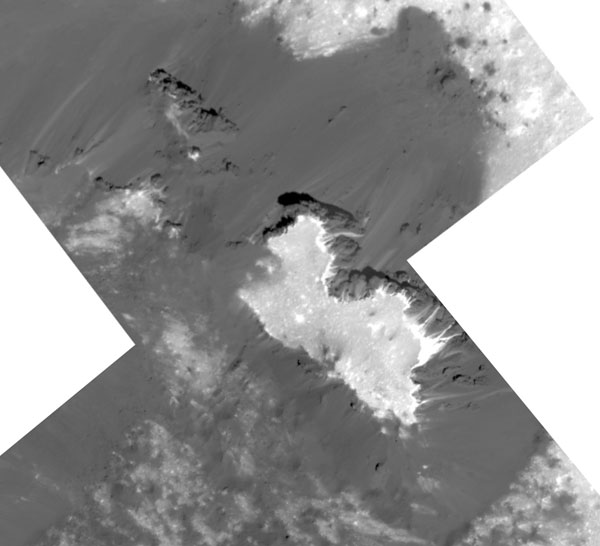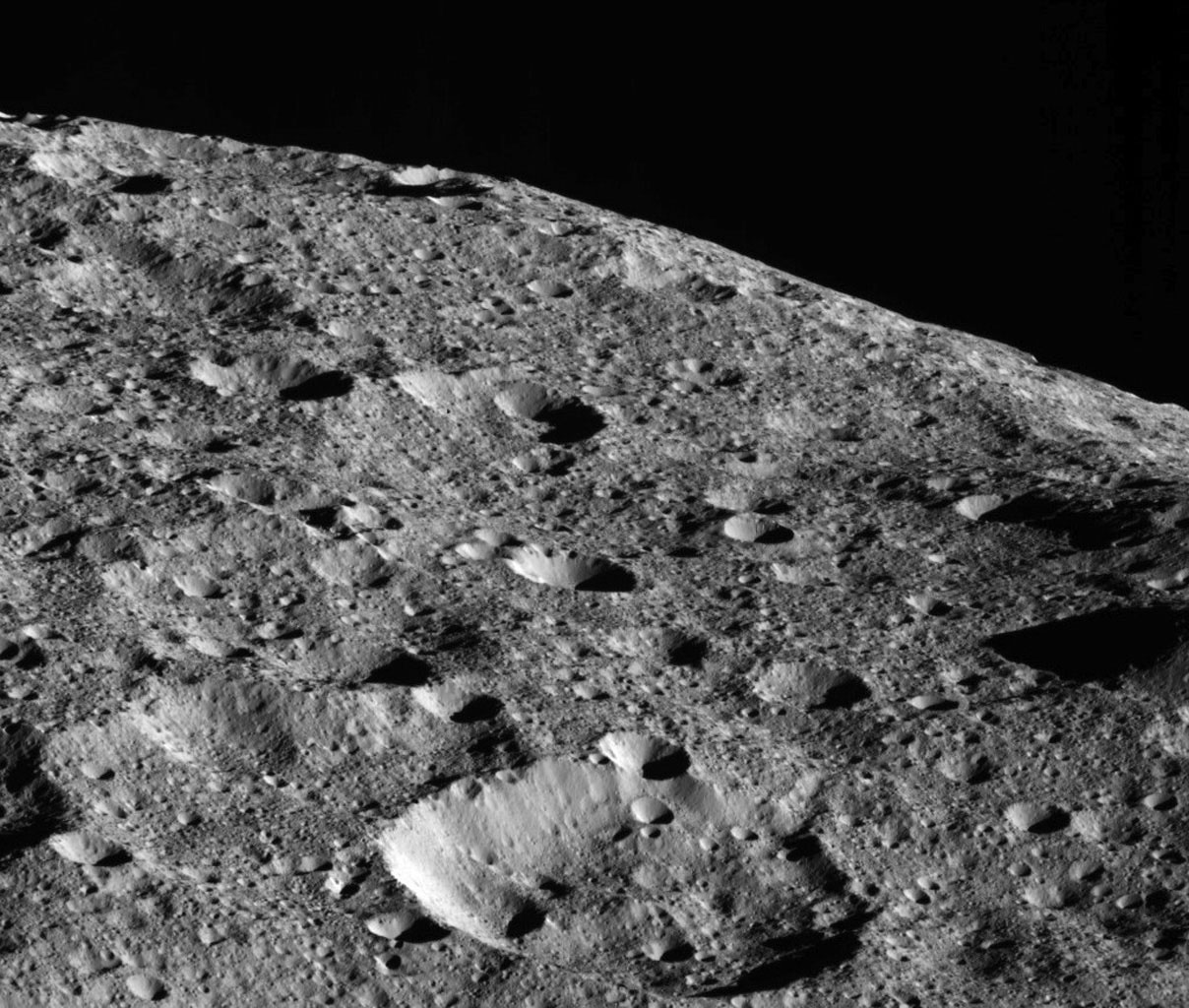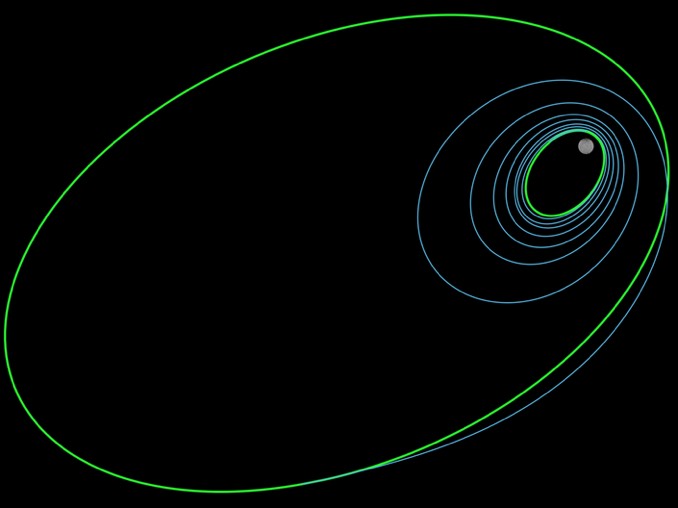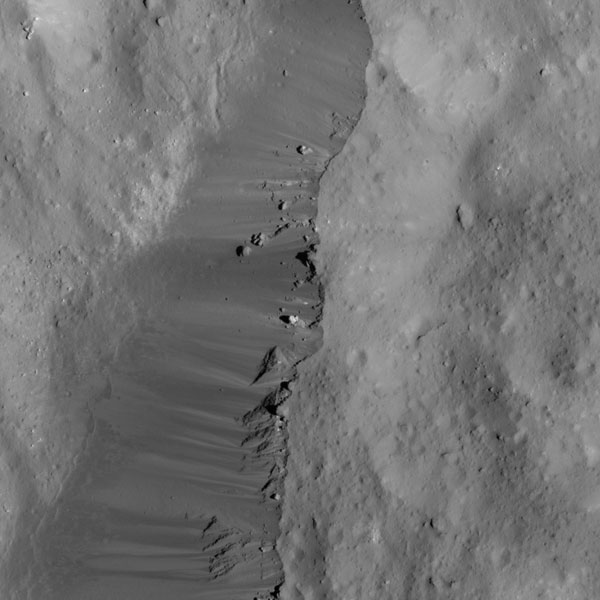NASA's Dawn spacecraft has entered a new and final orbit that will take it less than 30 miles above the surface of asteroid Ceres.

NASA / JPL-Caltech / UCLA / MPS / DLR / IDA
NASA's Dawn spacecraft is getting closer to Ceres than ever before. This comes as a climax to an amazing 11-year mission, whose goals have included exploring the biggest asteroid, and the only dwarf planet in the inner solar system.
Dawn entered orbit around 1 Ceres on March 6, 2015. Up until this year, Dawn's orbits brought it no closer than 385 kilometers (240 miles) from the dwarf planet's surface. The complicated process of entering the new 27-hour, 13-minute orbit around the asteroid began on April 16th, when NASA engineers instructed Dawn to fire its ion engines. The new orbit has a periapsis of less than 48 km above the pockmarked surface of Ceres and an apoapsis of 4,000 km.

NASA / JPL-Caltech / UCLA / MPS / DLR / IDA
Attaining a low orbit around Ceres object is no mean feat, as the asteroid's gravitational field is lumpy due to the asteroid's uneven composition. NASA engineers looked at over 45,000 possible trajectories before settling on the solution. A lower orbit will allow researchers to map Ceres's gravitational field and hence its internal mass distribution. Surprises may be in store, though: Dawn lost its last reaction wheel last year, so it now uses its hydrazine-fueled thrusters to control its orientation in space.
There's also a specific reason for the 27-hour, 13-minute orbit: This puts Dawn in a 3:1 resonant orbit with the asteroid, which rotates once every 9 hours, 4 minutes. Engineers are targeting several successive orbits over Occator crater.
In its last months Dawn will map Ceres in unprecedented detail while continuing to use its instruments to collect neutron and gamma-ray spectra, which probe the surface's chemical composition.

NASA / JPL
Exploring Ceres
Launched on September 27, 2007, from Cape Canaveral Air Force Station atop a Delta II rocket, Dawn flew by of Mars on February 18, 2009, before arriving at its first target, asteroid 4 Vesta on July 16, 2011. Then, on September 5, 2012, Dawn performed another first, departing orbit from one interplanetary destination and heading for another: its present and final home around Ceres. Equipped with a set of three ion engines, Dawn does a Star Wars Twin Ion Engine (TIE) Fighter one better.
Discovered on January 1, 1801, by astronomer Giuseppe Piazzi, Ceres was a mere point of light for more than two centuries until Dawn revealed it as a world unto its own. Dawn has revealed the dazzling scarps of Ahuna Mons cryovolcano and the enigmatic bright spots of Ceres, including the ones dotting Occator crater.
We can enjoy the final closeups of Ceres before Dawn falls silent later this year. Then, the excitement in asteroid exploration will shift towards the arrival of the Japanese Aerospace Exploration Agency's Hayabusa-2 at 162173 Ryugu this July, as well as Osiris-REX's arrival at 101955 Bennu this August.

NASA / JPL-Caltech / UCLA / MPS / DLR / IDA
More to come!
 0
0








Comments
You must be logged in to post a comment.